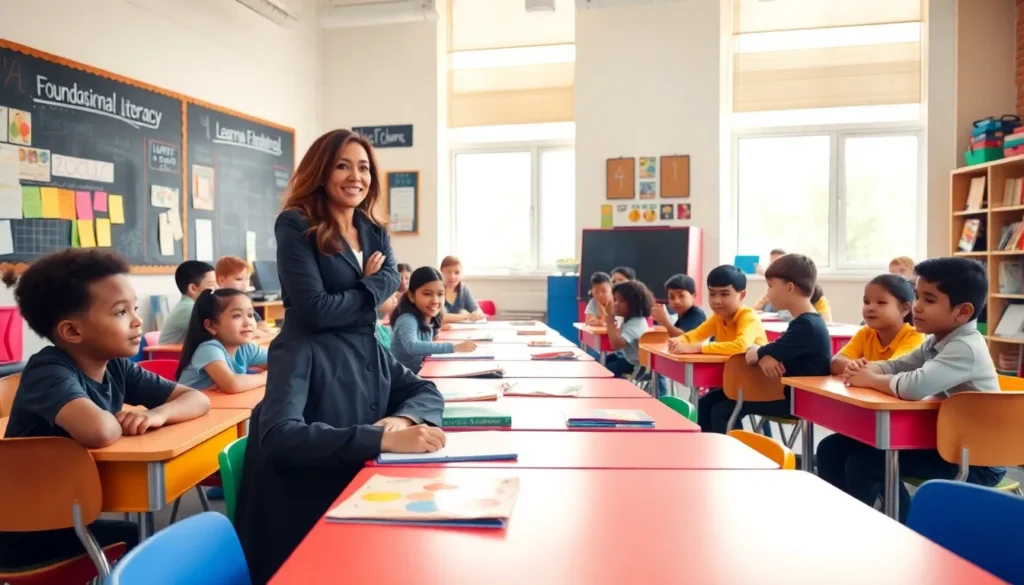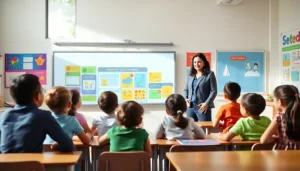Imagine a world where children embark on their educational journey, starting with the bright halls of elementary school. It’s a pivotal time in their lives, and if you’re wondering how many years this stage lasts, buckle up. Depending on where you are, the answer might not be as straightforward as you’d think. In this text, we’ll explore the ins and outs of elementary education and reveal the secrets of how long it really takes to navigate those formative years. Spoiler alert: It’s more than just a few grade levels. So, let’s jump into the nitty-gritty of elementary schooling, where the crayons are plenty, and the lessons of life begin.
Table of Contents
ToggleUnderstanding the Structure of Elementary Education

Elementary school serves as the backbone of the educational system, setting the stage for lifelong learning. In the United States, this phase typically encompasses kindergarten through fifth grade, although variations exist across states. It’s where foundational skills are built, such as reading, writing, and math, skills that kids will leverage throughout their academic careers.
The structure can vary significantly. Some districts even include pre-kindergarten, broadening the timeline for those curious little minds. Also, the focus isn’t just on academics. Social interactions, emotional development, and extracurricular activities all play key roles in shaping well-rounded individuals. So, parents often wonder: Is elementary school just a series of classes, or is it a preparation ground for future success? Spoiler: It’s a bit of both.
Typical Duration of Elementary School
When it comes to the duration of elementary school, it generally spans around five to six years, starting from kindergarten, depending on the district and the state. But, this timeline can differ widely, and here’s why:
Variations in Elementary School Length by State
Some states offer programs that extend elementary education to include grades earlier than Kindergarten, such as universal pre-K programs, while others might start formal education in kindergarten. For example, California has transitional kindergarten options, where eligible children can attend school one year earlier than typical kindergarten. In contrast, states like Minnesota also allow parents to choose whether to send their child to kindergarten at age five or wait another year.
Such variations can lead to children experiencing elementary school for anywhere from five to seven years based on local policies.
Grade Levels in Elementary School
Typically, kids will advance through grades one to five, each of which introduces new subjects and builds upon knowledge accrued in previous years. Kindergarten mostly focuses on social skills and basic literacy, while fifth grade often marks a transition point, preparing students for the upcoming challenges of middle school. Parents should keep in mind that these grade levels are filled with a range of learning experiences, from arts and crafts to advanced math concepts, each year unveiling new layers of knowledge.
The Transition to Middle School
Elementary school is more than just an academic stepping stone: it’s also the stage for significant personal growth. As kids progress through elementary years, they not only learn about math and grammar but also about collaboration, respect, and responsibility.
The Importance of Elementary Education
The skills learned during elementary school are foundational. They help shape a child’s ability to think critically, manage time, and navigate social interactions. By the time students finish elementary school, they should be able to read effectively and grasp essential math concepts, setting them up for the more complex subjects of middle school.
Challenges Faced in Elementary Education
But, the road isn’t always smooth. Many students face challenges, from adapting to a new environment in kindergarten to the pressure of standardized testing in higher grades. Teachers play a crucial role during this phase, often stepping in to provide the support kids need to overcome academic hurdles, emotional upheavals, or social dilemmas. Creating a nurturing atmosphere is vital for helping children thrive as they embark on their educational journey.
What Happens After Elementary School?
Once the confetti has settled after graduation, what lies ahead? Typically, students transition into middle school, where they encounter a more structured academic environment. This phase often involves switching classes and teachers, quite different from the self-contained classrooms of elementary school.
Middle school also expands the curriculum significantly, introducing elective courses such as art, music, and foreign languages, subjects that further stimulate cognitive and emotional development. The transition can be both thrilling and daunting, making those elementary years even more precious as they lay the groundwork for a fruitful academic experience. Parents and guardians might also find themselves navigating new dynamics as their children embrace more independence.











